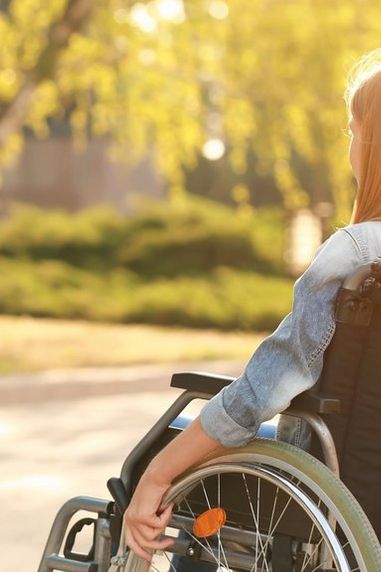Sleeping bags are always going to be on your camping checklist, so making the right choice to suit your needs is important. At Millets, we have loads of sleeping bags to choose from. Here is our expert guide to which sleeping bag is the one for you.
Contents
Whether you're a sleeping bag beginner or just brushing up on your knowledge, easily navigate our sleeping bag guide using the contents below.
Shape
There are a variety of sleeping bags coming in all forms of shapes and sizes, let’s look at the 4 popular shapes:
Types of Sleeping Bags
Mummy bag shape – This design is best for when you will be carrying a sleeping bag in your rucksack. A snug fitting shape that tapers at the feet, following the natural contour of the human body. This shape is best for retaining the most heat possible, whilst also removing excess bulk, reducing the pack size for easy transport. It is also worth noting that this tapered shape will sit close to your body, if you prefer to stretch and move in your sleep, it’s worth considering a different design.
Rectangular bag shape – These sleeping bags are squared at the top and bottom giving a feeling like your bed at home. Rectangular sleeping bags have zips on both sides and can be unzipped fully turning into a duvet, whilst also being able to zip together with an identical bag to create a double sleeping bag. Ideal for when you have little more room to spare, perfect for caravanning, indoor use or as a guest duvet. The rectangular shape may give you familiar home comforts the sacrifice is that you will not get the same level of warmth compared to a mummy shaped bag, you’re also adding more bulk and weight because of the design.
Double bag shape – As the name suggests, this sleeping bag is twice as wide as your normal rectangular bag. It can be helpful if you are trying to reduce packing since you don’t need to carry two sleeping bags. These sleeping bags are very bulky with a large pack size also have low warming properties, some consider this not a problem because you are sleeping next to someone for added body warmth.
Women’s bag shape – Colour is not the only thing that changes with a women’s bag. The women-specific sleeping bag will have extra insulation in areas of increased heat loss because women normally sleep colder than men. These bags are also shorter in length and narrower at the shoulders to reduce excess bulk and weight preventing unnecessary heat loss.
Insulation
Synthetic Insulation
Synthetic insulation is the most common form of insulation in sleeping bags. It is less expensive than down and will be able to hold around 50% of their insulating properties when wet. Synthetic insulation works the same as down by trapping in as much warm air as possible. These sleeping bags have great resistance to wear and tear, which is especially useful for festivals where drinks are likely spilt and being stepped on constantly. Synthetic and down share the same temperature ratings however synthetic tends to weigh more and have a larger pack size.
Down Insulation
Down insulation is the pinnacle of warmth to weight, delivering impressive warmth in a lightweight, low bulk design. Considered the best for winter expeditions where warmth and weight are the most important things. If you’re willing to invest in a down sleeping bag you will reap the benefits for the foreseeable future. However, down sleeping bags do need a lot of care when wet these bags lose their insulating properties, so it's best to be careful and treat them with care.
Down sleeping bags will have differing down ratios and a variety of fill powers. The former will tell you the amount of down in the sleeping bag for example 90/10 will contain 90% down plume feathers and 10% non-down feathers. The latter informs you how lofty the down is, 600 fill is considered good, 700 is high quality and 800 is the best and used for winter expeditions in an alpine environment.
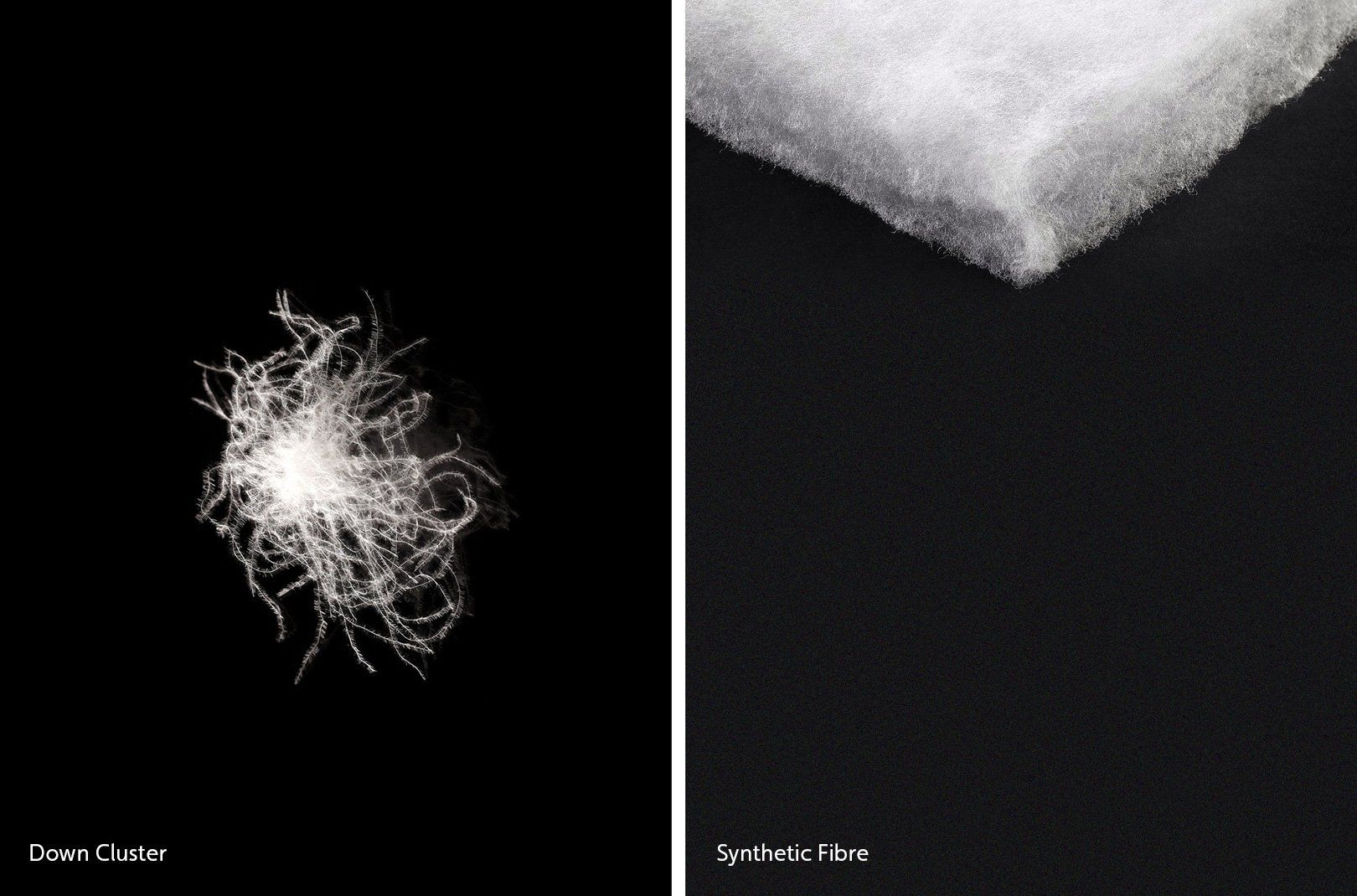
Warmth Ratings
Warmth ratings for sleeping bags come in 2 different varieties: Season rating and Comfort rating we will discuss both. It is understandable that we all feel the cold differently, so you should take these suggestions with a pinch of salt; if you do feel the cold more than normal then get a warmer sleeping bag to accommodate your needs.
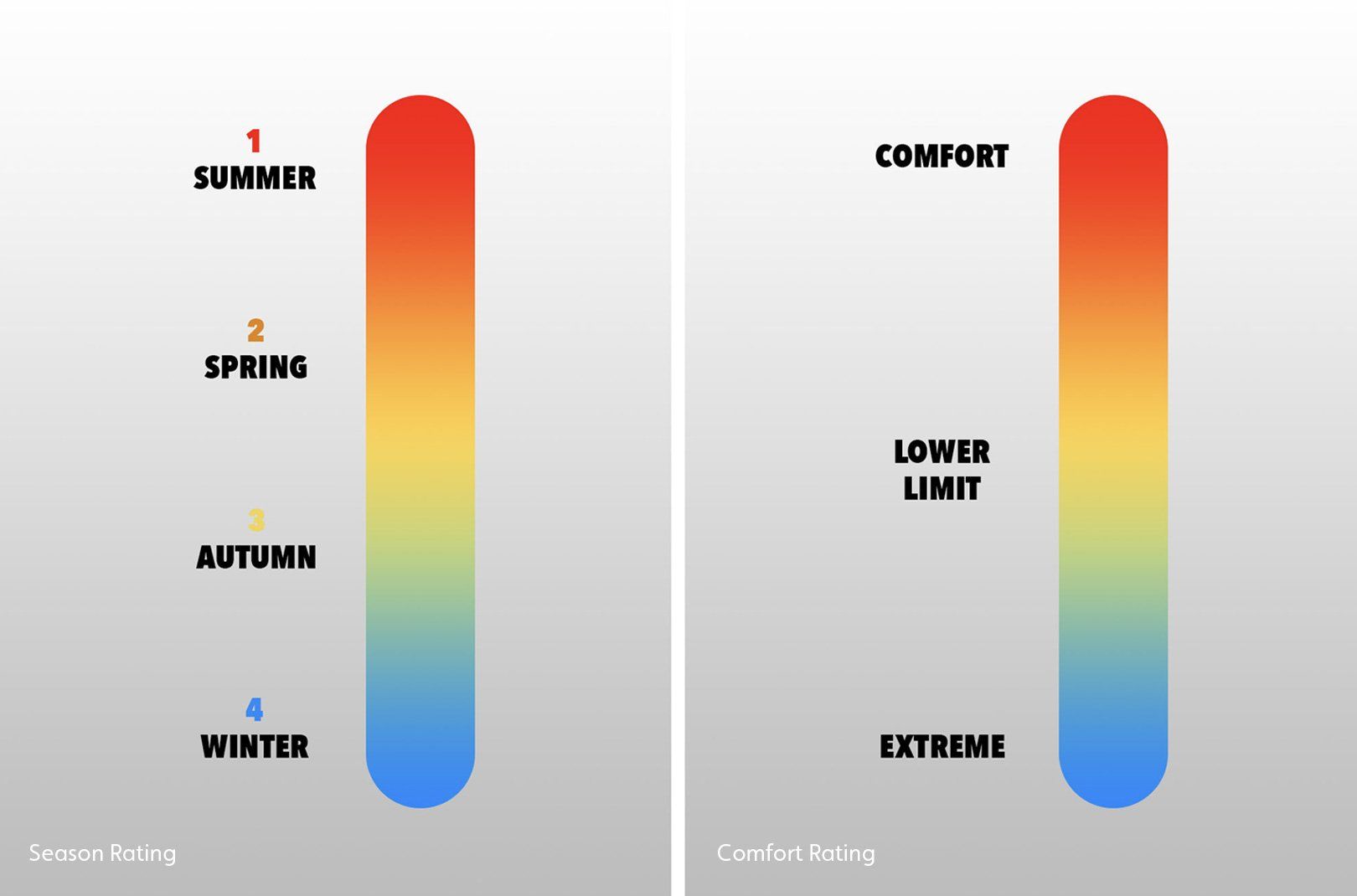
Season rating system
- One Season - Perfect for the height of summer in warm weather conditions or indoors. The majority of one season sleeping bags will have a small pack size and lightweight, which people will appreciate in hotter climates.
- Two Season - Will keep you warm from late spring to early autumn extending your chances of getting out camping sooner.
- Three Season - For use during the spring/summer/autumn seasons, a three season sleeping bag can also be used when just below the freezing point.
- Four Season - These winter ready sleeping bags are used for low temperatures and harsh conditions this will keep you warm during the UK winter season.
- Four+ Season- Four+ are specialist sleeping bags for expedition use in high altitude. Probably a bit much for UK weather, but useful when you want maximum warmth in low temperarures.
Comfort Rating
- Comfort Temperature – This is the temperature at which a ‘standard’ adult woman is expected to remain comfortable during the night.
- Limit Temperature – The temperature at which a ‘standard’ adult male can expect to have a comfortable night’s sleep in a ‘curled up’ position.
- Extreme Temperature – This is the survival only rating for a ‘standard’ adult woman. At this temperature, there is a serious risk of hypothermia or frostbite.
When looking at comfort ratings you should be thinking about the lowest temperature you’re likely to encounter and choose the sleeping bag which comfort temperature matches this. Do not fall under the impression that you’ll be fine because the extreme temperature says you will. If you use a sleeping bag in the extreme temperature range it’s going to be a dangerous night’s sleep.
Key Features
Sleeping bags have many features and clever additions that improve the warming and practicality of sleeping bags.
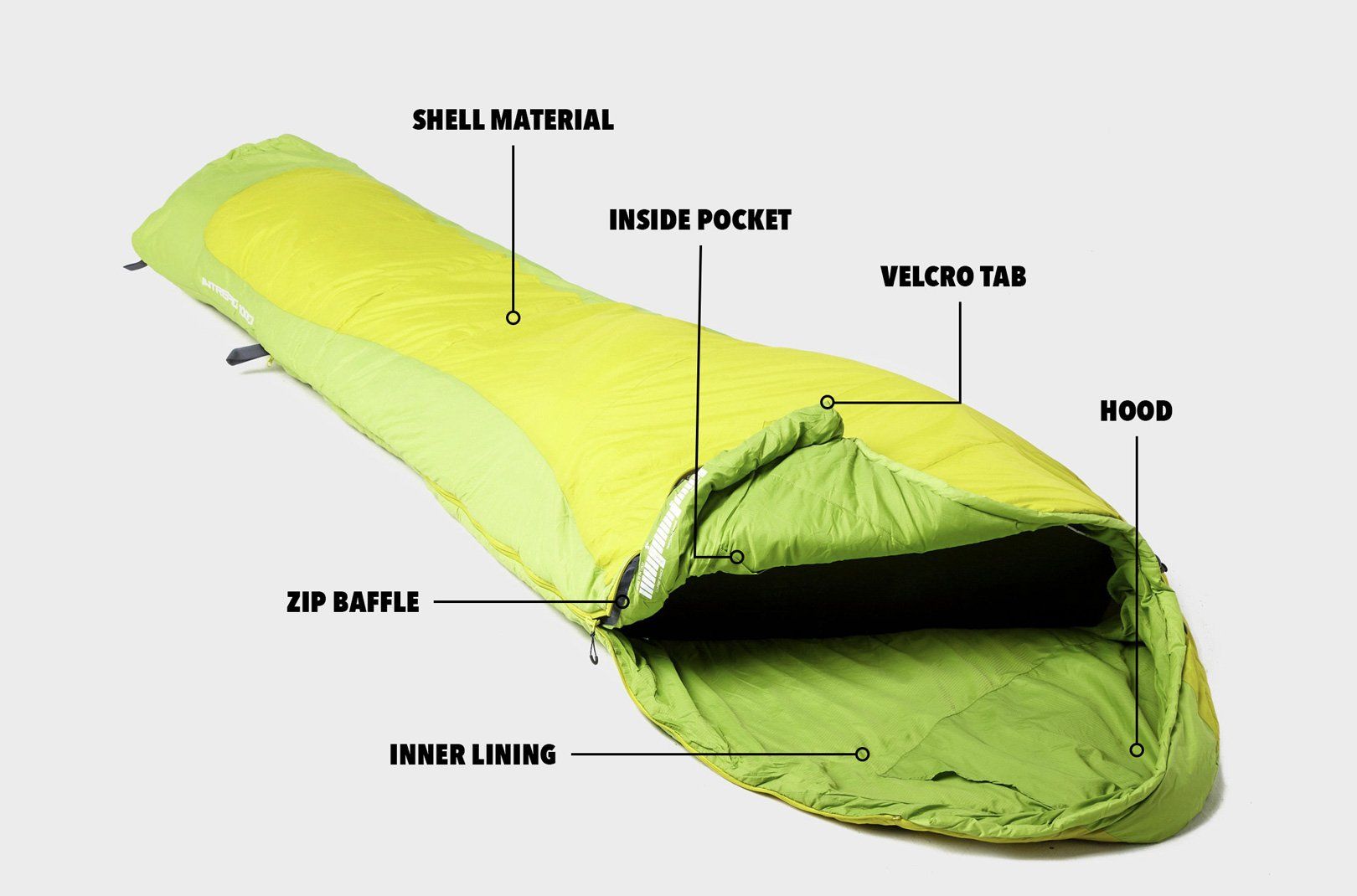
- Shoulder Baffles - This additional collar allows the bag to be closed around your shoulders and neck, trapping the warm air around your body and preventing it from escaping through the head hole.
- Zips - Other than the obvious reason for getting in and out of the sleeping bag, zips are very useful. They come in various lengths with the full length being the most common, giving you optimal ventilation if it gets too hot. Half-zip bags are useful for lowering bulk and reducing the number of areas for heat to escape.
- Compression bags - Many sleeping bags have a compression bag - a stuff sack with straps that lets you squash the sleeping bag down so it easily fits into your rucksack or car.
- Hood - Commonly found on mummy shaped sleeping bags, the contoured hood can be tightened all the way only leaving space for your face, so you can breathe freely and trap in as much heat as possible.
- Inside pockets - These pockets are commonly found near the chest or feet; they are great for keeping phone or camera batteries warm which helps the battery life of your devices.
- Velcro tabs - Velcro taps are found near zips to secure them, preventing them from working free in the night.
- Shell material – The outer shell of the sleeping bag normally corresponds with the activity it’s intended for. For trekking, you’ll find that ripstop fabric with a water-resistant coating is best suited, compared to a soft plush outer fabric which will be commonly found on sleeping bags intended for caravan camping holidays.
- Inner lining – Fine nylon or polyester is the most common material used, although it should be worth knowing that breathable cotton does tend to trap moisture so isn’t recommended for colder conditions
Aftercare
Washing and caring for your sleeping bag can seem like a daunting task, but it’s easier than you might think. A good start is to shake out and leave your sleeping bag to air out when packing up your campsite. Remember to stuff it in the bag - not fold or roll, because folding and rolling sleeping bags damage the fibres and baffles, shorting the lifespan of your sleeping bag. When at home store your sleeping bag in a larger bag as the more space it has, the longer it will last you.
Try and wash your sleeping bag as little as possible. You can keep it clean by wearing long clothes when you're sleeping, reducing the amount of sweat and dirt getting into the sleeping bag. When washing sleeping bags we advise following the steps on the back of the washing detergent. We recommend Nikwax Tech Wash for synthetic bags, and Nikwax Down Wash for down sleeping bags. With down sleeping bags, you can opt for having them professionally cleaned. This is best for 4season+ sleeping bags where ultimate care is recommended.
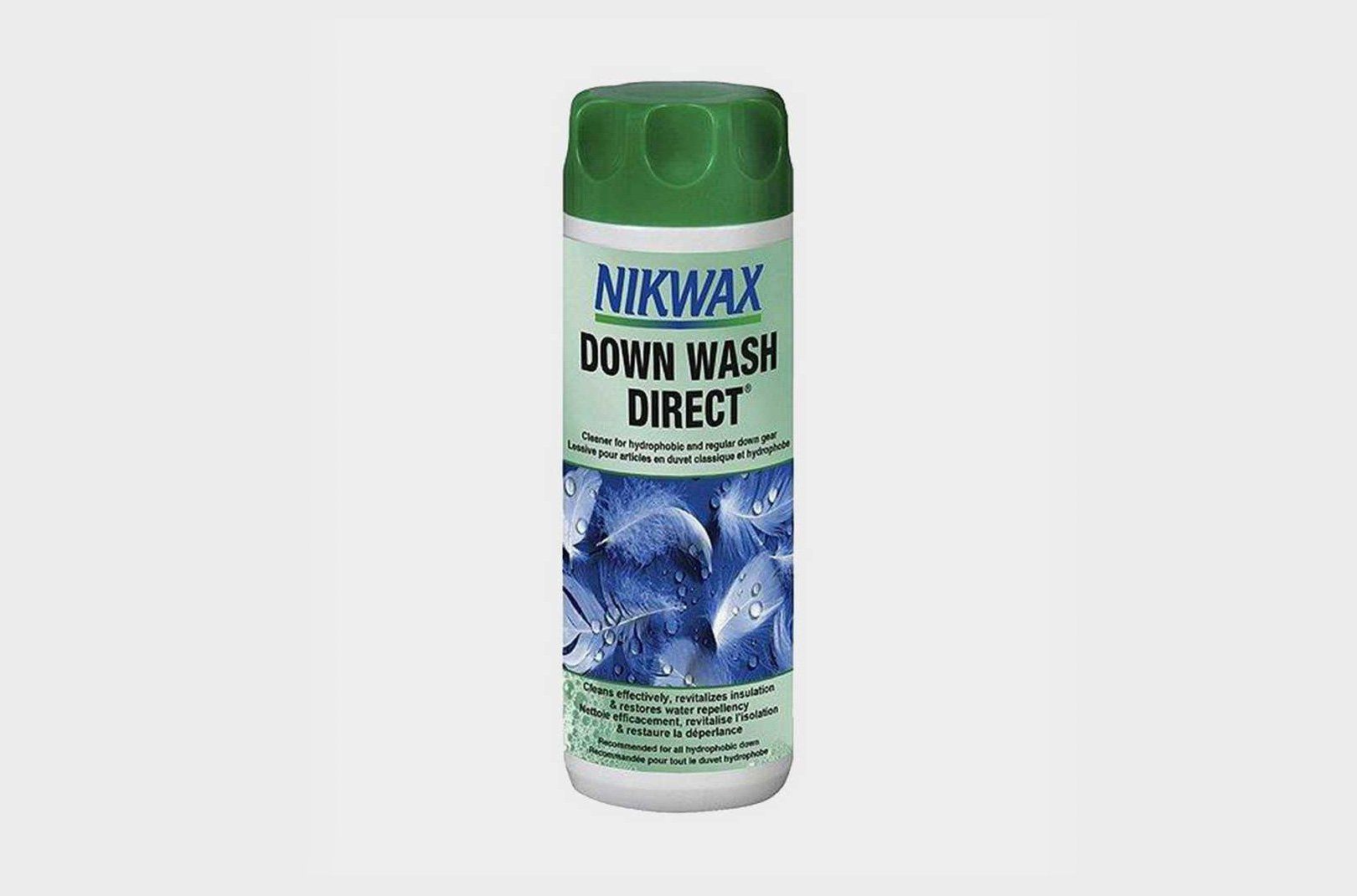
Tips
The effect moisture has on down can sometimes be greatly exaggerated, people tend to think down is as fragile as tissue paper when wet. A down sleeping bag needs to be directly rained on or have heavy amounts of dew on the surface before it loses its insulating properties. If you want added protection we suggest buying a sleeping bag with water-repellent down and a waterproof/breathable shell.
When backpacking, keep your sleeping bag inside your pack. It’s one of your most important pieces of kit, so don’t leave it hanging on the outside getting mucky, bashed around and wet. Another handy trick to keepng your sleeping bag clean is to swap out your compression sack for a drysack, stopping your sleeping bag from getting wet no matter what the weather is doing.
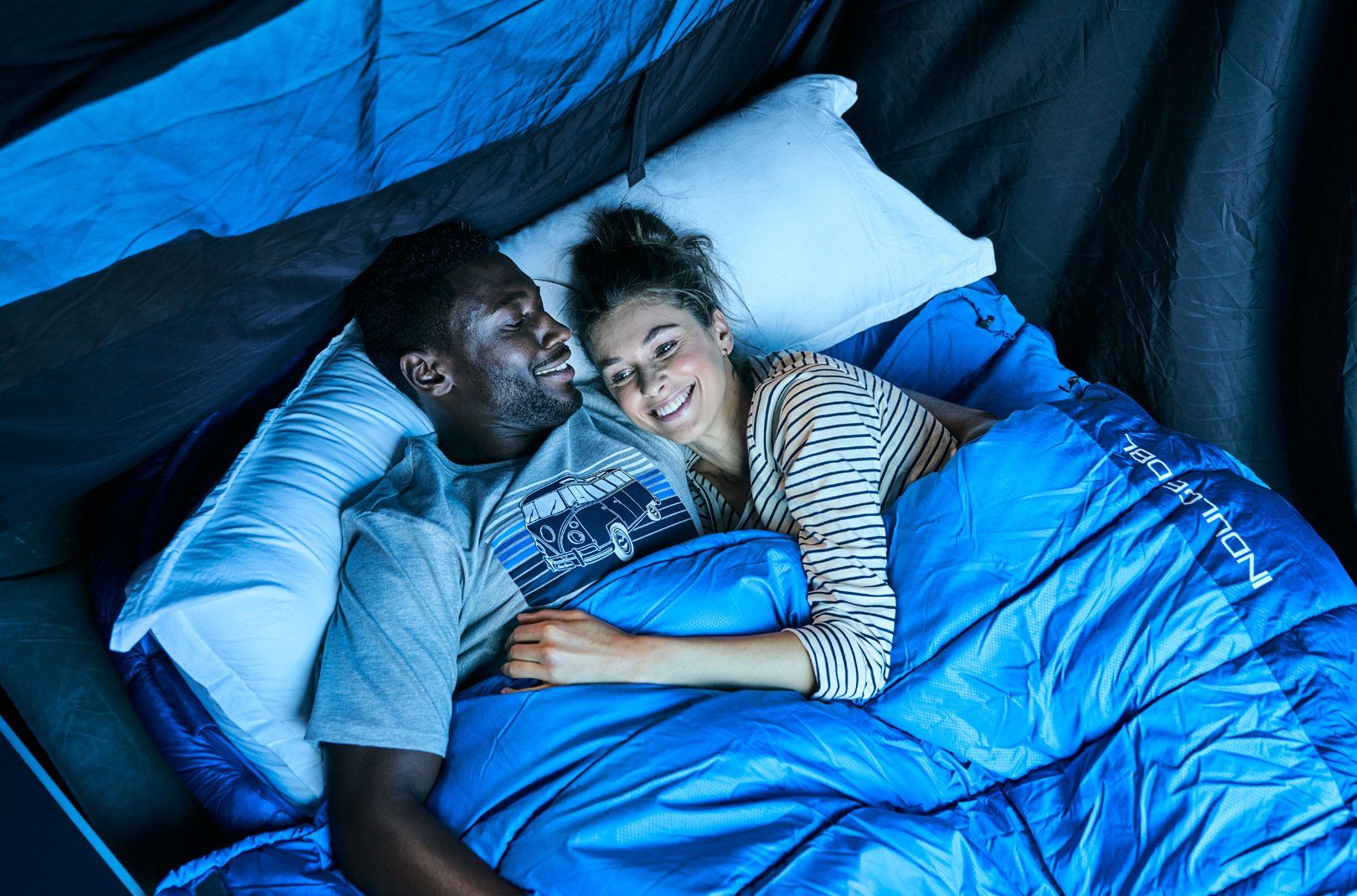
Sleeping bags will state whether they have left or right-hand zips. Now this may seem pointless at first, but you’ll quickly realise it can be quite awkward to zip up a sleeping bag that has a zip on your dominant side, so if you're left handed, use a right zip, and if you're right handed, a left zip. (Just remember you want the opposite to your dominant hand!). Another thing worth knowing is depending on which side you normally sleep on, it’s better to the keep the zip at your back rather than your front for added comfort.
If you’re looking to save weight but don’t want to sacrifice having a pillow, how about putting your dry clothes in your sleeping bag sack for a makeshift pillow - an easy alternative that saves on space and is much better than nothing!
Shop the range now to find the right sleeping bag for you.
Want to recommend your sleeping bag to someone else or share snaps of your adventures outdoors? Add your comments below and share what you get up to outdoors on Facebook, Instagram or Twitter using #mymillets.
